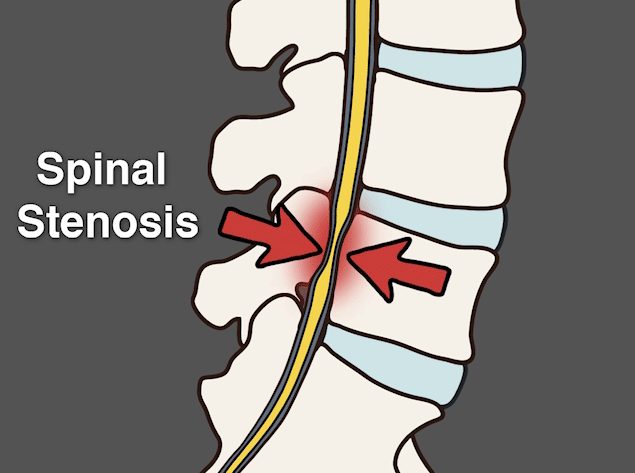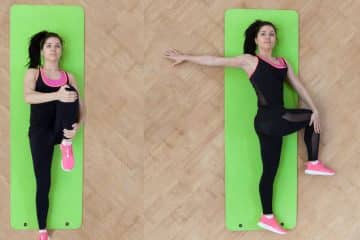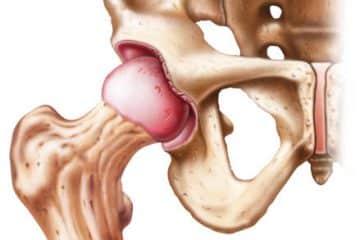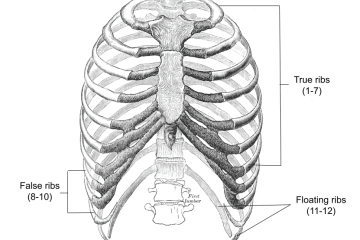Spinal stenosis is a medical condition whereby the spinal canal is abnormally narrow resulting in pressure on the spinal cord or nerve roots. Symptoms of spinal stenosis include pain or numbness in the arms or legs. In severe cases, there may be loss of bladder control, loss of bowel control or sexual dysfunction.
Spinal stenosis often results from aging, arthritis, scoliosis, tumors and trauma.
Treatment options include exercise, medications, bracing or surgery. Spinal stenosis surgery is recommended when other treatments have been ineffective.

spinal stenosis
Spinal Stenosis Exercise
The importance of exercising cannot be over-emphasized. Exercise increases blood flow to the back thereby increasing oxygen and nutrient supply. Not only that, exercise strengthens the muscles around the back thereby reducing the pressure on the spine.
Exercise to treat spinal stenosis and improve symptoms include:
1. Cycling – Some people find bicycle riding an enjoyable and rewarding activity. Stationary biking may be preferable. This allows for a forward lean.
2. Swimming – Others find swimming to be a positive activity, or water therapy (which is an exercise in a pool).
3. Gyming – Joining a gym and working with a therapist or trainer is often an effective way to learn some good stretching and core strengthening exercises.
4. Tai Chi – Taking a Tai Chi class that involves slow, deliberate and flowing movements of the body is another way to exercise and treat spinal stenosis.
5. Walking – Shorter and frequent walks, as long walks can exacerbate pain
Spinal Stenosis Medications
Some certain medications may help treat spinal stenosis and improve symptoms.
Pain relievers. Over-the-counter medicines such as acetaminophen (Tylenol), ibuprofen (Advil, Motrin), or naproxen (Aleve) might ease the pain.
Cortisone. This is a steroid that your doctor injects into your spinal column. It brings short-term — and sometimes permanent — relief.
Spinal Stenosis Surgery
Spinal stenosis surgery is typically only done if all else fails.
Common surgical techniques to treat spinal stenosis include:
1. Laminectomy
This is the most common surgical option. It involves decompression by removing the lamina, a portion of the vertebral bone. A laminectomy surgery involves the removal of 2 laminae and the spinous process (bony protrusion at the back of the vertebra) that connects them.
The vertebral arch normally helps protect the back of the spinal cord. By removing part of the vertebral arch during a laminectomy, the goal is to decompress the spinal cord and nerve roots that were being pinched or inflamed by spinal stenosis. In severe stenosis, parts of one or more enlarged facet joints may also be removed as part of a laminectomy.
Laminectomy is the most common surgery for spinal stenosis. While it is sometimes accompanied by a fusion of adjacent vertebrae to maintain stability, that is not always necessary.
2. Foraminotomy
A foraminotomy surgery removes a small part of the intervertebral foramen (bony opening where the spinal nerve exits the spinal canal). In addition to removing part of the foramen and associated bone spurs, partial removal of the disc and/or other soft tissues that were compressing the spinal nerve in or near the foramen may also be removed.
A foraminotomy is less invasive than a laminectomy, but it is not an option when spinal stenosis is more extensive or widespread.
3. Discectomy and Fusion
Sometimes disc degeneration plays a key role in narrowing the intervertebral foramen and causing spinal stenosis. In such cases, the collapsing disc space may need to be restored by removing the degenerated disc and fusing the adjacent vertebrae.
There are various surgical methods to accomplish discectomy and fusion. In the neck, the most common method is anterior cervical discectomy and fusion (ACDF).
In cases when spinal stenosis is extensive or affects multiple levels of the spine, a fusion is likely done in conjunction with other procedures, such as a laminectomy or foraminotomy.
Spinal Stenosis Surgery Risks
Like all surgical procedures, spinal stenosis surgery has its own risk of complications.
Possible problems from surgery include:
- Problems from anesthesia.
- A deep infection in the surgical wound.
- A skin infection.
- Blood clots.
- Nerve injury, including weakness, numbness, or paralysis.
- Tears in the fibrous tissue that covers the spinal cord and the nerve near the spinal cord. These tears may require more surgery.
- Trouble passing urine, or loss of bladder or bowel control.
- Long-term (chronic) pain, which happens after surgery in some cases.
The chance that the surgery won’t relieve your symptoms. And even if you get better with surgery, there is a chance that you may get new symptoms in the future.
Symptoms may return after several years. A second surgery may be needed if:
- Spinal stenosis develops in another area of the spine.
- An earlier surgery didn’t control symptoms.
- Tissue regrows and presses on the spinal cord or spinal nerve roots.
Spinal Stenosis Cost
The total cost for spinal stenosis surgery depends on a lot of factors such as the anesthetic fee, private hospital fee, private operating facility fee, extent of stenosis and insurance coverage.
Since each patient’s insurance coverage is different, it’s important to understand your plan to know how much, if any, of the surgery will be covered.
For example, some patients may have high deductibles where insurance will cover only a small portion of the associated costs. On the other hand, some patients may have 80/20 plans where the insurance may cover a significant amount and the patient is only responsible for their copay.
The total cost of the procedure is around $12,500 – $35,000.
Spinal Stenosis Recovery
Two to three days post-surgery, you will be released from the hospital and be able to begin your recovery process. It is important to limit certain types of movements and activities that you engage in after your surgical procedure. Lifting heavy items, bending and twisting can cause you to negatively impact the results of your surgery.
To have an optimal outcome, you should be very careful with how you move. Driving, housework, long periods of sitting, smoking and taking non-steroidal anti-inflammatory drugs can be harmful to your recovery process.
Make sure to sit down with your physician to get a clear list of things you can and cannot do, in order to make sure your spinal surgery is a complete success.
Related: Postoperative Exercises
Typically 4-6 weeks after surgery, you can return to regular movements and life. Full results from pain relief might take up to 6 months.
During this time, it is essential to undergo outpatient physical therapy sessions to learn how to move correctly. This will help you take care of your spine post-surgery, for the best results.
More: Spinal Fusion Surgery


